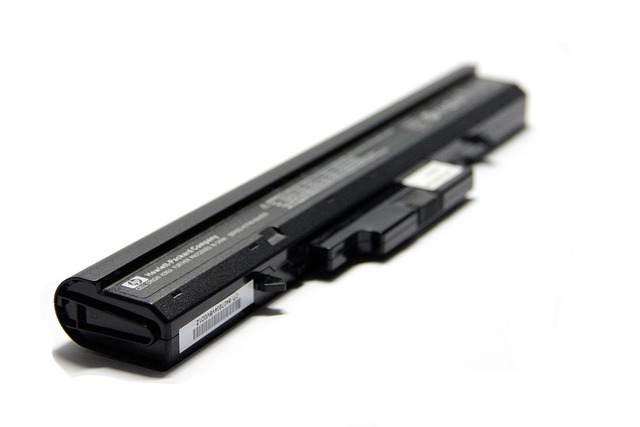When a battery starts to degrade, it may show visual signs such as swelling, color fading, cracks, or terminal corrosion, indicating it's time to replace it. Swelling can be due to overcharging or age and poses safety risks. A faded color on the battery indicator or branding markings points to reduced capacity and efficiency. Cracks or dents beyond normal wear can signal internal stress. Regular monitoring for these visual changes is key for early detection, ensuring device longevity and preventing potential hazards like overheating or fire. For devices like vehicles, inspecting and cleaning corroded terminals or replacing the battery can resolve issues, but if the battery is old, replacement might be necessary. Monitor your device's battery life closely; a significant drop in its ability to hold a charge is a clear signal that it's nearing the end of its useful life. When this happens, it's advisable to replace the battery to avoid data loss and ensure continuous functionality. Always use the correct battery model, adhere to safety protocols during replacement, and follow manufacturer guidelines to avoid damage or injury. Ensure proper disposal of old batteries and opt for genuine parts for optimal performance and device compatibility. Replacing your battery with a new one can enhance both safety and device efficiency.
When your device’s battery performance wanes, visual cues can guide you to a replacement before issues escalate. This article illuminates three critical signs that signal it’s time to replace your battery. From a bloated case to fading branding and terminal corrosion, learn how these indicators reflect your battery’s health and the importance of timely intervention. Understanding these visual warnings is key to maintaining device functionality and ensuring safety during battery replacement.
- Understanding Battery Health: The Role of Visual Cues
- Swollen Battery Case: A Clear Sign It's Time to Replace
- Fading Color and Branding on the Battery: An Indicator of Wear
- Corrosion on Battery Terminals: A Precursor to Poor Performance
- Diminished Capacity: Monitoring Your Battery's Hold Charge
- Safe Battery Replacement: Steps and Precautions to Take When Replacing Your Battery
Understanding Battery Health: The Role of Visual Cues

When a battery starts to falter, it often sends out visual signals that its performance is degrading and a replacement may be necessary. These indicators can provide an early warning before the battery fails entirely. One of the most apparent signs is a swollen or bloated battery case. This physical distortion occurs when the battery’s internal chemistry leads to an expansion of cells, often due to overcharging or age-related wear. If you notice your device’s battery protruding from its usual contours, it’s a clear sign that the battery has compromised safety and should be replaced promptly. Another visual cue is the color change of the battery indicator. A healthy battery typically shows a solid color, whereas a failing one may display a faded or discolored appearance. This can manifest as a white, red, or blue hue on smartphones or other electronic devices, indicating reduced capacity and efficiency. Additionally, the presence of cracks or dents in the battery casing, beyond minor cosmetic damage, can also be indicative of internal stresses that may have compromised the battery’s integrity. Regular inspection for these visual signs can help users identify issues before they lead to a complete loss of power, ensuring the longevity and safety of their devices. It’s advisable to monitor these cues and consider a replacement battery if any of these conditions are met, as this will prevent potential hazards and maintain optimal device performance.
Swollen Battery Case: A Clear Sign It's Time to Replace

When a battery’s performance starts to wane, one of the most visible signs is physical distortion in its casing. A swollen battery case, often due to overcharging or age-related degradation, is a clear and pressing indication that it’s time to replace your battery. This physical expansion can be subtle at first, with the casing slightly protruding from its usual contours. As the condition progresses, the swelling becomes more pronounced, potentially leading to a misshapen appearance or even an inability for the device to function properly. It’s crucial not to ignore this development as a swollen battery can pose a safety risk, including overheating and potential fire hazards. Replacing the battery promptly upon detecting such a change will prevent further damage to your device and ensure both its longevity and safety. Regular checks for physical changes in the battery casing, alongside monitoring other performance metrics like charge duration and device responsiveness, can help you proactively address battery issues before they escalate into more serious problems.
Fading Color and Branding on the Battery: An Indicator of Wear

When a rechargeable battery begins to age, its ability to hold and deliver energy diminishes, often manifesting visually through fading color and branding logos. This visual decline is not merely an aesthetic concern but a clear sign that the battery’s performance is degrading. Typically, high-quality batteries come with distinct colors and branding that are easily recognizable. Over time, these markings may start to fade due to oxidation or chemical reactions within the battery cells. This fading can indicate that the electrodes are losing their ability to maintain a charge effectively. As such, if you notice that your once vibrant battery’s branding and color appear washed out or less pronounced than usual, it might be an opportune moment to consider a replacement. Ensuring your device operates with an optimal battery is crucial for its longevity and performance, making the decision to replace a battery with visible signs of wear both prudent and necessary.
Corrosion on Battery Terminals: A Precursor to Poor Performance

When your battery’s performance starts to wane, there are distinct visual indicators that can alert you to the need for a replacement before a total failure occurs. One such indicator is the presence of corrosion on the battery terminals. This chemical reaction often appears as a white or greenish powdery substance around the posts where the battery connects to the vehicle’s electrical system. Corrosion forms when there’s a reaction between the battery’s electrolyte and the metal parts, such as the terminals or their connections. This process can inhibit the battery’s ability to hold a charge, leading to poor engine performance and difficulty starting the car. Regularly inspecting the battery terminals for signs of corrosion is a proactive step in maintaining your vehicle’s reliability, and when detected, it should prompt you to consider replacing the battery or at least cleaning the terminals to restore optimal function. A compromised connection due to corrosion can significantly reduce the efficiency of your electrical system, making it imperative to address this issue promptly to avoid unexpected car troubles and ensure a reliable start every time. If you notice corrosion on your battery terminals, it’s advisable to replace the battery or clean the affected areas thoroughly with a mixture of baking soda and water, followed by rinsing and drying the area before reconnecting the cables. This maintenance can often revitalize the battery’s performance; however, if the corrosion is severe or the battery is old, it may be time to replace it altogether.
Diminished Capacity: Monitoring Your Battery's Hold Charge

When your device’s battery no longer retains charge as effectively as it once did, it’s a clear sign that its capacity is diminishing. This reduction in hold charge is indicative of the battery’s chemistry changes over time, leading to reduced efficiency. To proactively monitor your battery’s health, keep an eye on the percentage of charge it holds relative to its maximum capacity when new. A noticeable decline from the standard you’ve come to expect can signal that a replacement battery is imminent. Regularly charging your device to full and then allowing it to discharge completely can help you gauge its performance. If you consistently find yourself needing to recharge more frequently or if the battery indicator shows less charge than before, it may be time to consider replacing your battery. This is particularly true if your device’s battery no longer lasts through a typical day without recharging, which was previously manageable. Identifying this trend early on can prevent data loss and ensure your device remains functional, saving you from the inconvenience of unexpected power outages.
Safe Battery Replacement: Steps and Precautions to Take When Replacing Your Battery

When the time comes to replace your battery, it’s crucial to approach the task with care and precision. The first visual indicator that your battery may need replacing is a significant decrease in capacity, where the device no longer holds a charge as long as it once did. This can be observed through the battery usage menu on most devices, which displays the battery level percentage. A noticeable deviation from the standard performance is often an early warning sign.
Before proceeding with the replacement, ensure you have the correct battery model and take appropriate safety precautions. The wrong battery type can lead to incompatibility or even damage to your device. Safety glasses and gloves should be worn to protect against electrical hazards during the disassembly process. Once the old battery is removed, carefully inspect it for any bulging, cracks, or other signs of wear that could indicate overheating or imminent failure. Proper disposal of the old battery according to local regulations is also a must, as these contain hazardous materials.
During the replacement process, handle the new battery with clean, dry hands, and follow the manufacturer’s instructions closely. Make sure the device is powered off and disconnected from any chargers before starting. Use a soft anti-static cloth to gently install the new battery in its designated slot. After installation, reassemble the device and perform a couple of charge-discharge cycles to ensure the battery calibrates correctly. This will help extend the lifespan of your newly installed battery and maintain optimal performance. Remember, always replace your battery with genuine parts to ensure compatibility and longevity.
When a battery reaches the end of its lifecycle, it sends clear visual signals that signify the need for a replace battery. A swollen battery case is an unmistakable indicator of potential danger and necessitates immediate action. Similarly, fading color or branding can hint at wear, while terminal corrosion often foreshadows diminished capacity. It’s crucial to monitor these visual cues regularly to maintain the safety and efficiency of your devices. If you notice any of these signs, it’s time to proceed with caution and follow the necessary steps for safe battery replacement, ensuring both your gadget’s performance and your personal safety. Remember, a proactive approach to battery maintenance can extend the life of your device and prevent unexpected power loss or, worse, hazardous situations.
